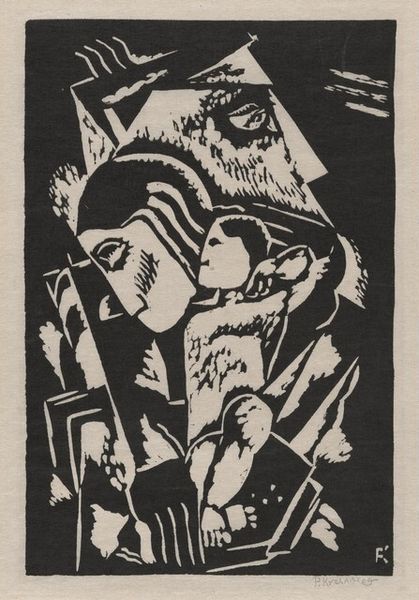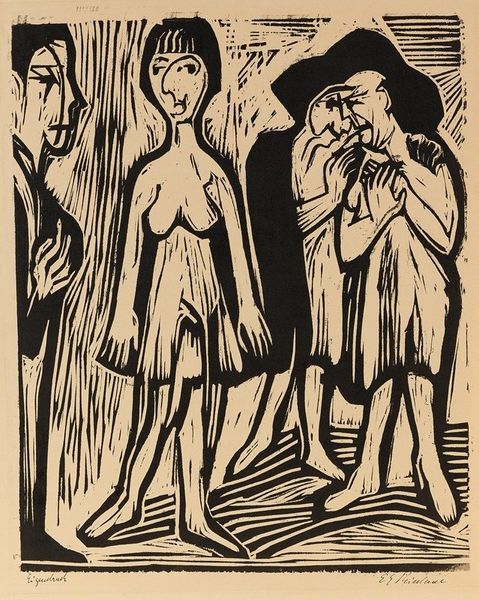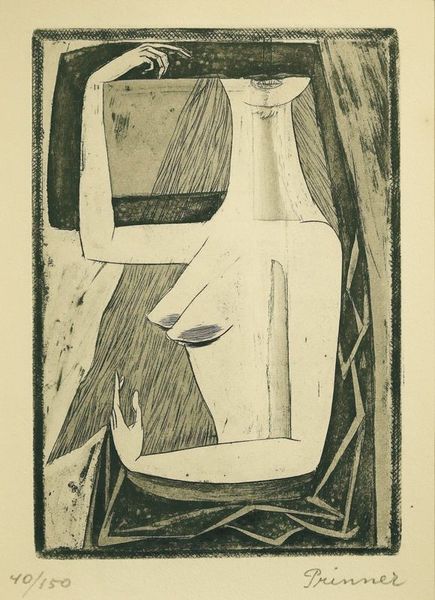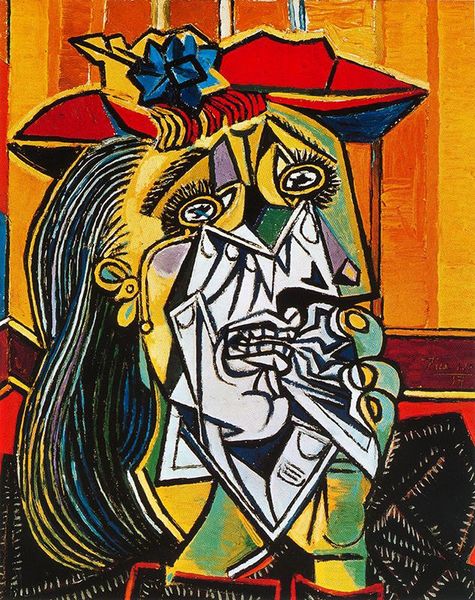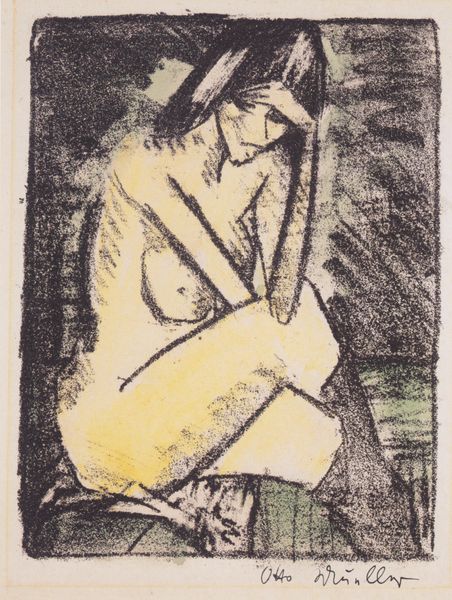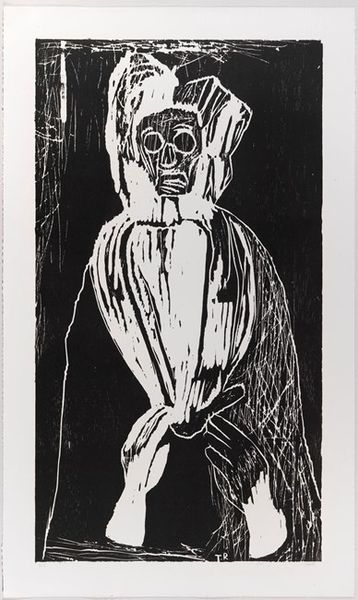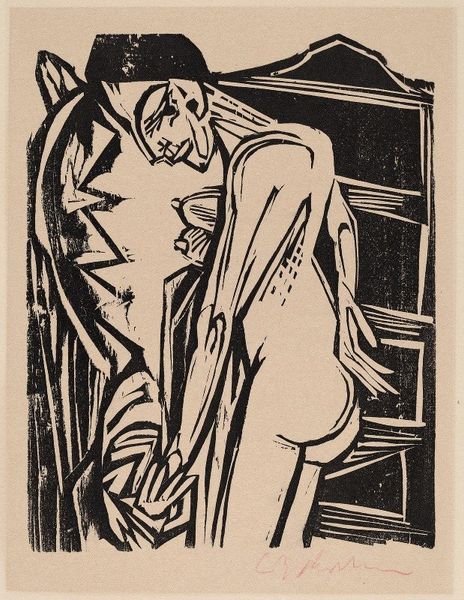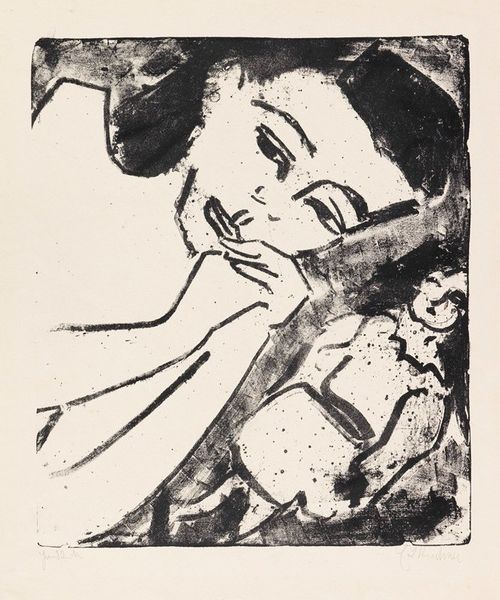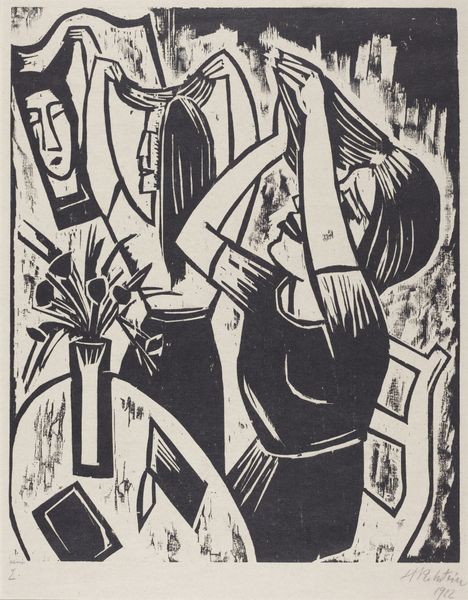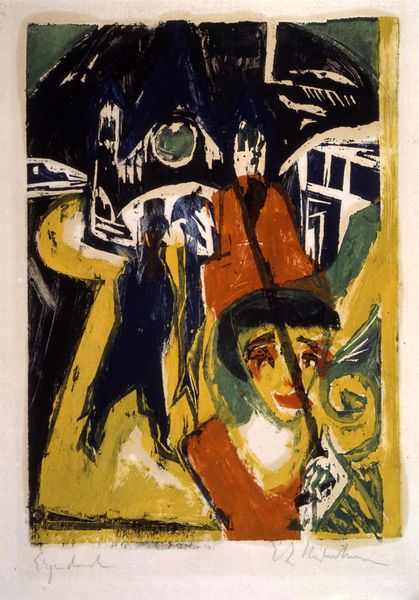
#
figurative
#
facial expression drawing
#
caricature
#
junji ito style
#
fluid art
#
coffee painting
#
animal drawing portrait
#
portrait drawing
#
tattoo art
#
facial portrait
#
portrait art
Copyright: Public Domain: Artvee
Editor: This intriguing piece is "Poster of Nina Hard" by Ernst Ludwig Kirchner, created around 1921. I’m really drawn to the almost unsettling expressiveness of the figure, achieved through the woodcut medium. What’s your take on this, seen through a historical lens? Curator: What strikes me is how this image reflects the cultural anxieties of the Weimar Republic. Consider the rise of Expressionism. Kirchner, along with other artists, were responding to a society struggling with the aftermath of World War I, hyperinflation, and changing social norms. Do you notice how the bold lines and stark contrasts create a sense of unease and perhaps even caricature? It pulls no punches. Editor: Absolutely, there’s definitely something intentionally harsh about it, it’s not idealized in the traditional sense. What can we gather about Kirchner's motivation behind producing such an abrasive image, and displaying it publicly? Curator: I see this poster challenging conventional beauty standards of the time. Perhaps the “abrasiveness” you pointed out functioned as a strategy by Kirchner, an intentional rupture aimed at shocking the bourgeoisie and prompting social introspection. Consider that posters are, by nature, public declarations, and this one boldly claims space for representing new ideas of femininity. In doing so, they were helping reimagine and rebuild German culture, after Germany experienced defeat in the First World War. Editor: So, by displaying this powerful, though rather sharp, visual message in public, Kirchner challenged the traditional understanding of female beauty, turning it into a topic that promoted much broader thinking and dialogue at a crucial time. Curator: Exactly. Kirchner utilized this visual shorthand to provoke thought about emerging cultural norms and aesthetics in Germany after World War I, making the artwork both of its time and incredibly relevant even today. Editor: Thanks! This makes me rethink how poster art functions, especially in socio-political change. I initially viewed it as an emotive image, now, through considering it through this background, I perceive so many layers that are in discourse with German society at the time.
Comments
No comments
Be the first to comment and join the conversation on the ultimate creative platform.


